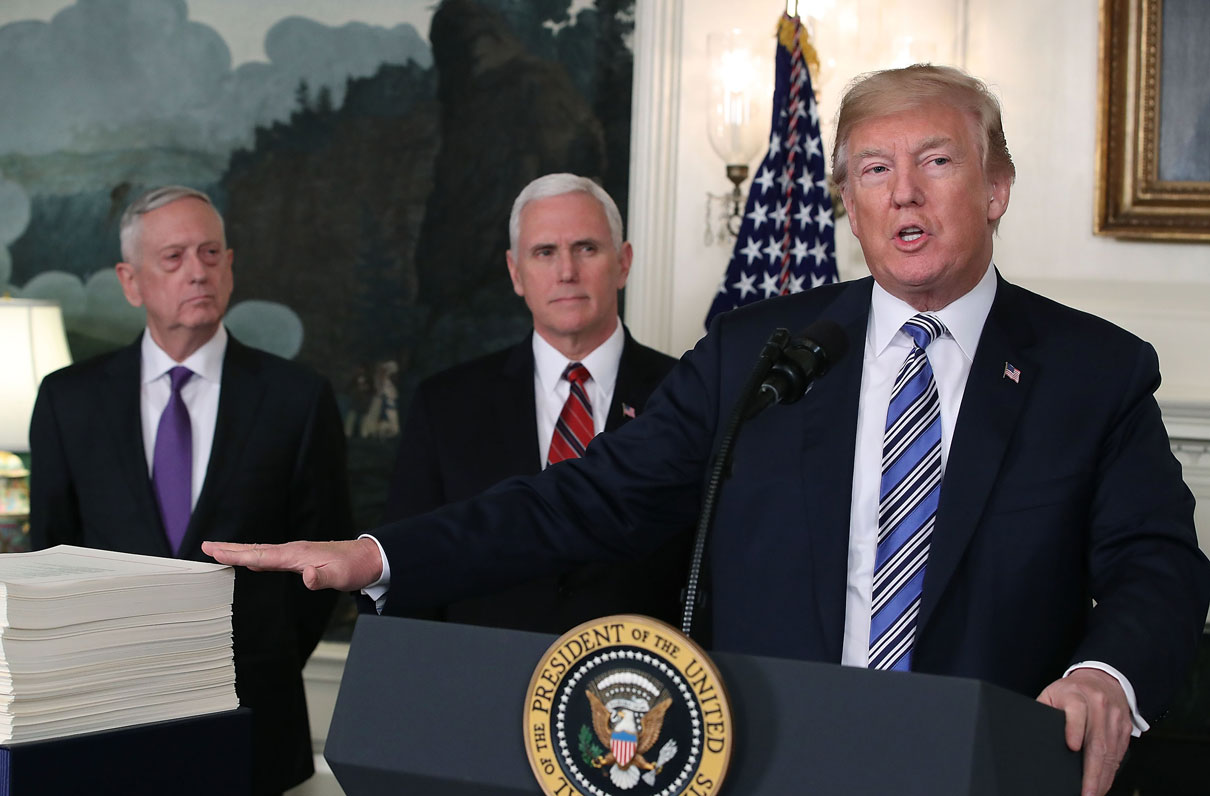Hours after threatening to veto a $1.3 trillion spending bill, President Donald Trump signed the measure to fund the government through September, narrowly preventing this year's third shutdown.
The president signed the omnibus spending bill Friday afternoon after members of the House and Senate passed it on Thursday. The massive spending bill funds the government through the end of this fiscal year following several stopgap measures that capped spending at 2017 levels.
The government was set to run out of funding Friday at midnight. Trump said he was considering a veto because the bill doesn't include plans for dealing with hundreds of thousands of undocumented immigrants known as Dreamers or full funding for a border wall.
He said he looked “very seriously at the veto” but opted to sign the bill because of the “great gains we've been able to make for our military.”
“We had no choice but to fund our military because we have to have the strongest military in the world,” Trump said. “This will by far be the strongest military we've ever had.”
The omnibus spending bill includes several hits and misses for the military and veterans. Here's a look at what is - and isn't - tucked into the $1.3 trillion bill.
The hits
MOAA applauds inclusion of these key measures in the spending bill:
- A 2.4 percent pay raise for servicemembers, which they've been receiving since Jan. 1. (Learn more about the military pay-raise gap here.)
- $700 billion for the military - the largest year-on-year funding increase for DoD in 15 years. That includes $144 billion for weapons and equipment upgrades.
- A lift on defense spending caps, one of five things MOAA wanted President Trump to address in his first State of the Union speech.
- Spending flexibility that will allow military leaders to use some funds appropriated this year in fiscal 2019.
- A $234 million funding increase for NOAA.
- Mental-health services for “bad paper” veterans that includes screenings before they leave the military. Metal-health support will also be provided to those who: served 100+ days on active duty, experienced sexual trauma, or served as drone operators.
- A 1.9 percent pay raise for federal civilians.
The misses
Here are some of the things that were left out:
- Much-needed VA reform was not included. Several reform proposals were included in the drafts that lawmakers dropped earlier this week. Proposed reforms included increased funding for private-sector care and the MOAA-supported expansion of caregiver support.
- There's still a long way to go to restore regular fiscal order. This spending bill was passed halfway through the fiscal year. It took five continuing resolutions and two government shutdowns to get here.
- There's also, as the president noted when he signed the bill, a need for greater transparency. Lawmakers scrambled this week to get votes on a 2,000-plus-page bill before the government ran out of funding. This violates a 2010 promise by Republicans for greater government transparency.
Another fiscal showdown is likely to occur this fall, and Congress now has just six months to complete work on its fiscal 2019 budget. Lawmakers expect to begin work on DoD's 2019 budget in early May.
Jamie Naughton contributed to this report.
